
The Microsoft Certified Solutions Associate is a range of qualifications that underline that you have a high level of expertise in a chosen area of speciality. Whether your interest is in servers, SQL or desktop support an MCSA can help you unlock doors

The main purpose of this 3 day instructor led course is to give students a good understanding of the Transact-SQL language which is used by all SQL Server-related disciplines; namely, Database Administration, Database Development and Business Intelligence. As such, the primary target audience for this course is: Database Administrators, Database Developers and BI professionals.
The course will very likely be well attended by SQL power users who aren’t necessarily database-focused; namely, report writers, business analysts and client application developers.
This course is intended for Database Administrators, Database Developers, and Business Intelligence professionals. The course will very likely be well attended by SQL power users who aren’t necessarily database-focused; namely, report writers, business analysts and client application developers.
This module introduces SQL Server, the versions of SQL Server, including cloud versions, and how to connect to SQL Server using SQL Server Management Studio.
Lessons
Lab : Working with SQL Server 2016 Tools
After completing this module, you will be able to:
This module introduces the elements of T-SQL and their role in writing queries, describes the use of sets in SQL Server, describes the use of predicate logic in SQL Server, and describes the logical order of operations in SELECT statements.
Lessons
Lab : Introduction to Transact-SQL Querying
After completing this module, you will be able to:
This module introduces the fundamentals of the SELECT statement, focusing on queries against a single table.
Lessons
Lab : Writing Basic SELECT Statements
After completing this module, you will be able to:
This module explains how to write queries which combine data from multiple sources in SQL Server. The module introduces the use of JOINs in T-SQL queries as a mechanism for retrieving data from multiple tables.
Lessons
Lab : Querying Multiple Tables
After completing this module, you will be able to:
This module explains how to enhance queries to limit the rows they return, and to control the order in which the rows are displayed. The module also discusses how to resolve missing and unknown results.
Lessons
Lab : Sorting and Filtering Data
After completing this module, you will be able to:
This module explains the data types SQL Server uses to store data. It introduces the many types of numeric and special-use data types. It also explains conversions between data types, and the importance of type precedence.
Lessons
Lab : Working with SQL Server 2016 Data Types
After completing this module, you will be able to:
This module describes the use of Transact-SQL Data Manipulation Language to perform inserts, updates, and deletes to your data.
Lessons
Lab : Using DML to Modify Data
After completing this module, you will be able to:
This module introduces the use of functions that are built in to SQL Server Denali, and will discuss some common usages including data type conversion, testing for logical results and nullability.
Lessons
Lab : Using Built-In Functions
After completing this module, you will be able to:
This module introduces methods for grouping data within a query, aggregating the grouped data and filtering groups with HAVING. The module is designed to help the student grasp why a SELECT clause has restrictions placed upon column naming in the GROUP BY clause as well as which columns may be listed in the SELECT clause.
Lessons
Lab : Grouping and Aggregating Data
After completing this module, you will be able to:
This module will introduce the use of subqueries in various parts of a SELECT statement. It will include the use of scalar and multi-result subqueries, and the use of the IN and EXISTS operators.
Lessons
Lab : Using Subqueries
After completing this module, you will be able to:
This module introduces the set operators UNION, INTERSECT, and EXCEPT to compare rows between two input sets.
Lessons
Lab : Using SET Operators
After completing this module, you will be able to:



Looking to get into end user, programming or CRM? Speak to a course advisor today!
To find out more about Microsoft Dynamics please click below to...
Find out more »